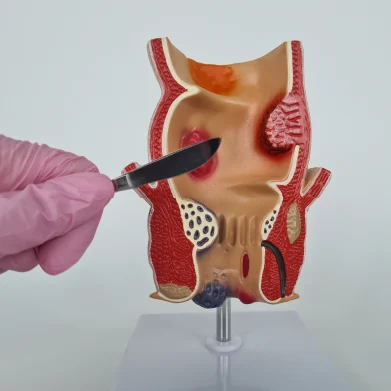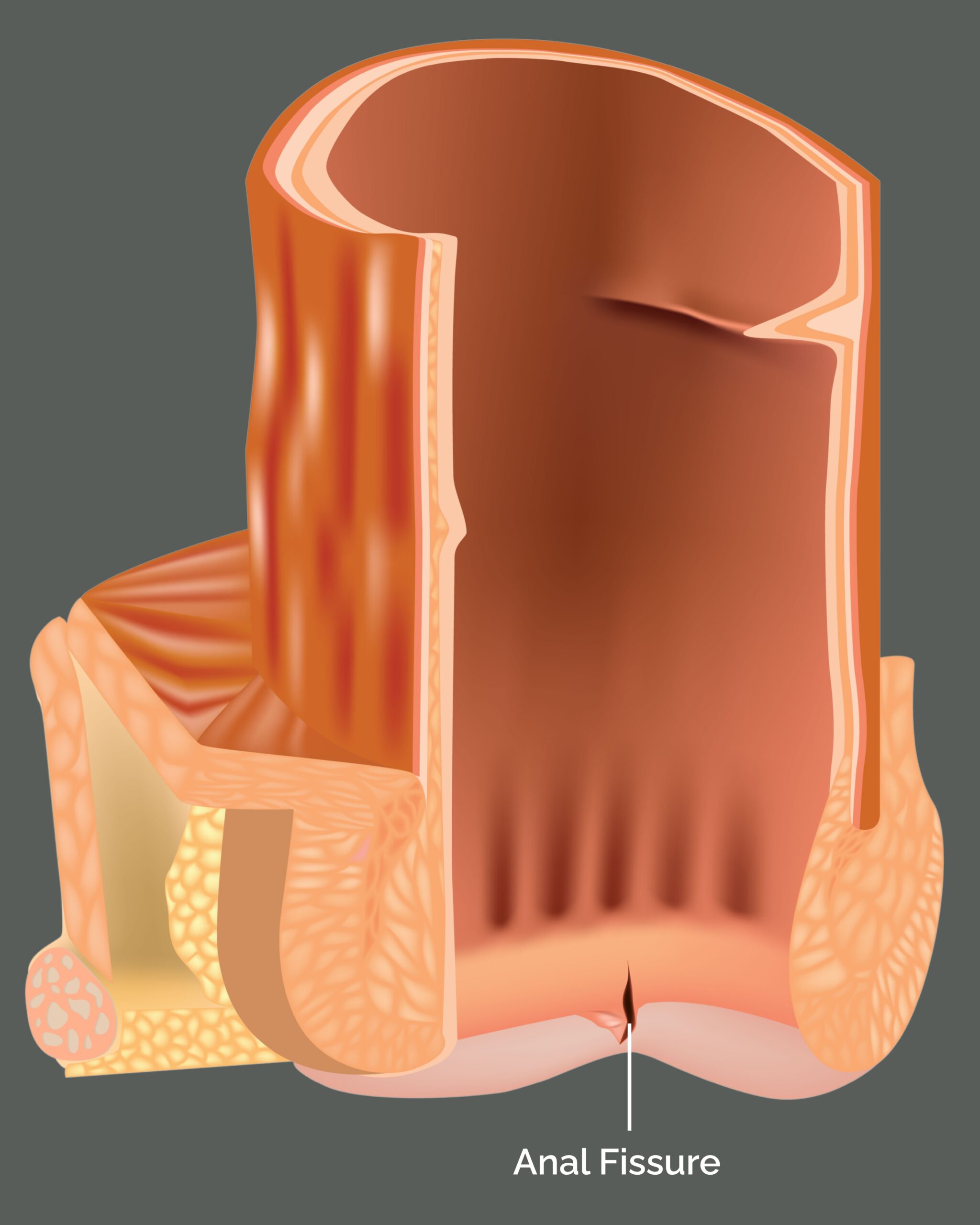PROCTOLOGY

Hemorrhoid & Proctology Care
Hemorrhoids, commonly referred to as piles, are swollen or dilated veins in the anal or rectal area that can cause discomfort, pain, itching, and bleeding. They can be classified into two types:
Internal Hemorrhoids: These develop inside the rectum and are usually painless but may result in bleeding or prolapse (protrusion outside the anal opening).
External Hemorrhoids: These occur outside the anus, often leading to pain, swelling, and irritation.
Hemorrhoids can also vary in severity and location, including prolapsed, thrombosed, or mixed types. Expert care and tailored solutions are available to provide relief and restore your comfort.
Hemorrhoid & Proctology Care

Hemorrhoids, commonly referred to as piles, are swollen or dilated veins in the anal or rectal area that can cause discomfort, pain, itching, and bleeding. They can be classified into two types:
Internal Hemorrhoids: These develop inside the rectum and are usually painless but may result in bleeding or prolapse (protrusion outside the anal opening).
External Hemorrhoids: These occur outside the anus, often leading to pain, swelling, and irritation.
Hemorrhoids can also vary in severity and location, including prolapsed, thrombosed, or mixed types. Expert care and tailored solutions are available to provide relief and restore your comfort.
Fistula Treatment
Effective treatment for fistulas often requires a combination of medical management and surgical intervention:
Medical Management: This involves antibiotics to treat or prevent infections and medications to reduce inflammation and ease discomfort.
Surgical Intervention: Common procedures, such as a fistulotomy, involve carefully opening the fistula tract to allow it to heal naturally as a flat scar, effectively repairing the abnormal connection. Expert care ensures that fistula treatment addresses the root cause, minimizes complications, and enhances the patient’s overall quality of life.

Fistula Treatment

Effective treatment for fistulas often requires a combination of medical management and surgical intervention:
Medical Management: This involves antibiotics to treat or prevent infections and medications to reduce inflammation and ease discomfort.
Surgical Intervention: Common procedures, such as a fistulotomy, involve carefully opening the fistula tract to allow it to heal naturally as a flat scar, effectively repairing the abnormal connection. Expert care ensures that fistula treatment addresses the root cause, minimizes complications, and enhances the patient’s overall quality of life.

Pilonidal Cyst (Pilonidal Sinus)
Also referred to as: Ingrown Hair Cyst, Tailbone Cyst, or Coccygeal Fistula
Pilonidal cysts are a common condition, particularly among young adults, and can affect both men and women. They typically appear in the crease between the buttocks, near the tailbone, and often present with discomfort, swelling, or drainage.
Symptoms May Include:
Persistent pain or tenderness in the tailbone area
Swelling or a lump in the buttock crease
Redness and inflammation
Discharge of pus or blood (sometimes foul-smelling)
Recurring abscesses or infections
Understanding the Causes:
Once thought to be congenital, pilonidal cysts are now recognized as acquired conditions. Common contributing factors include:
Excess hair in the area (present in 60–70% of patients)
Friction or pressure from prolonged sitting
Bacterial buildup in pores and hair follicles
Low-oxygen environment in the buttock crease, which favors infection and inflammation
Why Treatment Matters:
Pilonidal cysts may appear small externally, but the true risk lies beneath the skin:
The cyst can extend several centimeters deep
Multiple branching sinus tracts may form
Delayed care often leads to multiple openings and more complex infections
Early diagnosis and treatment help prevent complications, reduce recurrence, and promote smoother recovery.
Pilonidal Cyst (Pilonidal Sinus)

Also referred to as: Ingrown Hair Cyst, Tailbone Cyst, or Coccygeal Fistula
Pilonidal cysts are a common condition, particularly among young adults, and can affect both men and women. They typically appear in the crease between the buttocks, near the tailbone, and often present with discomfort, swelling, or drainage.
Symptoms May Include:
Persistent pain or tenderness in the tailbone area
Swelling or a lump in the buttock crease
Redness and inflammation
Discharge of pus or blood (sometimes foul-smelling)
Recurring abscesses or infections
Understanding the Causes:
Once thought to be congenital, pilonidal cysts are now recognized as acquired conditions. Common contributing factors include:
Excess hair in the area (present in 60–70% of patients)
Friction or pressure from prolonged sitting
Bacterial buildup in pores and hair follicles
Low-oxygen environment in the buttock crease, which favors infection and inflammation
Why Treatment Matters:
Pilonidal cysts may appear small externally, but the true risk lies beneath the skin:
The cyst can extend several centimeters deep
Multiple branching sinus tracts may form
Delayed care often leads to multiple openings and more complex infections
Early diagnosis and treatment help prevent complications, reduce recurrence, and promote smoother recovery.
Anal fissure
An anal fissure is a small tear or cut in the lining of the anus that causes pain and bleeding during bowel movements. Though common, fissures can be extremely painful and disruptive to daily life. Many people confuse them with hemorrhoids, but they are different conditions requiring specific care.

ANAL FISSURE

An anal fissure is a small tear or cut in the lining of the anus that causes pain and bleeding during bowel movements. Though common, fissures can be extremely painful and disruptive to daily life. Many people confuse them with hemorrhoids, but they are different conditions requiring specific care.
